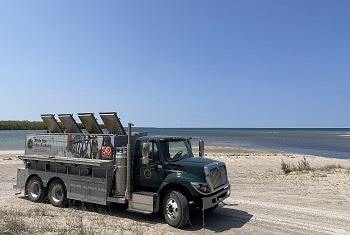Reel in a marked or tagged fish? Let the Michigan DNR know
Reel in a marked or tagged fish? Let us know! 
If you fish the Great Lakes and catch a marked and tagged fish, please report it. You’re helping the DNR collect critical information about the state’s fish populations and trends. The department has used a coded-wire tag program to “mass mark” various fish species in Michigan since the 1980s. Mass marking provides data that helps fisheries biologists determine the value of naturally reproduced fish versus stocked fish, as well as the lakewide movement of fish.
The program involves implanting a small, coded-wire tag, invisible to the naked eye, into the snout of a fish. A fish containing a coded-wire tag can be identified because its adipose fin (the small, fleshy fin between the dorsal and tail fins) has been removed. Anglers who catch these tagged fish can help by recording needed information about the fish, removing and freezing the fish’s snout, and taking it to one of the designated drop-off locations around the state.
The DNR, in conjunction with the U.S. Fish and Wildlife Service and other state agencies, places coded-wire tags in the snout and removes the adipose fin from lake trout, rainbow trout (steelhead), and chinook and Atlantic salmon stocked into lakes Huron and Michigan.
Beginning in 2018, all rainbow trout stocked in Lake Huron and Lake Michigan (including tributaries) will contain a coded-wire tag. All chinook salmon stocked in Lake Huron will contain a coded-wire tag, while only a portion of those stocked in Lake Michigan will contain the tag.
Get more details about the DNR’s mass marking efforts at michigan.gov/taggedfish or by contacting John Clevenger, 231-547-2914 or Elyse Walter, 517-284-5839.





